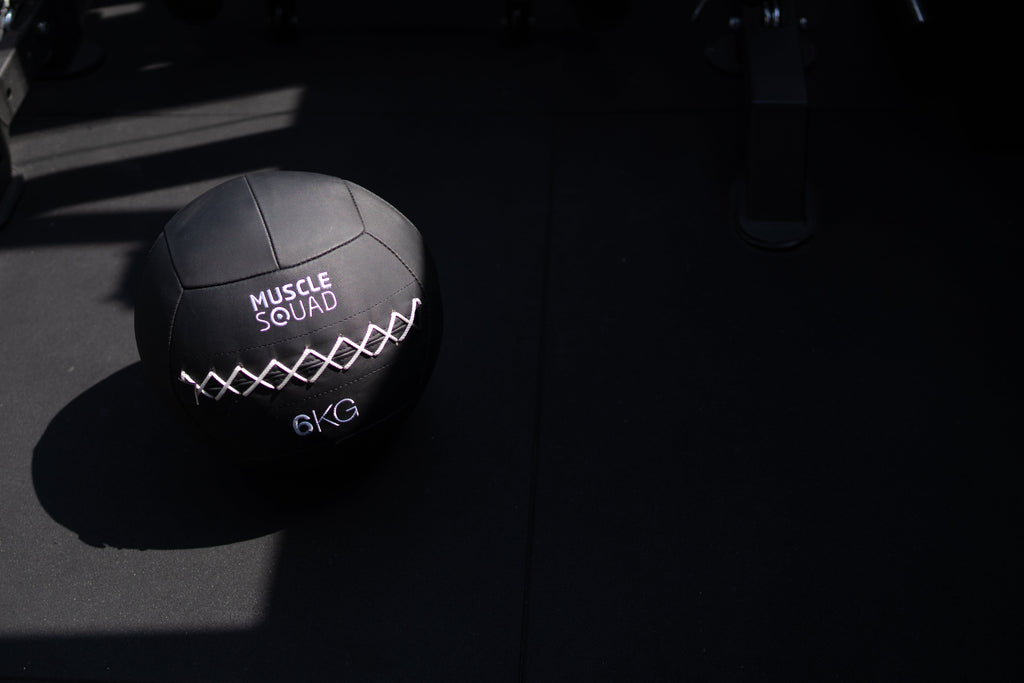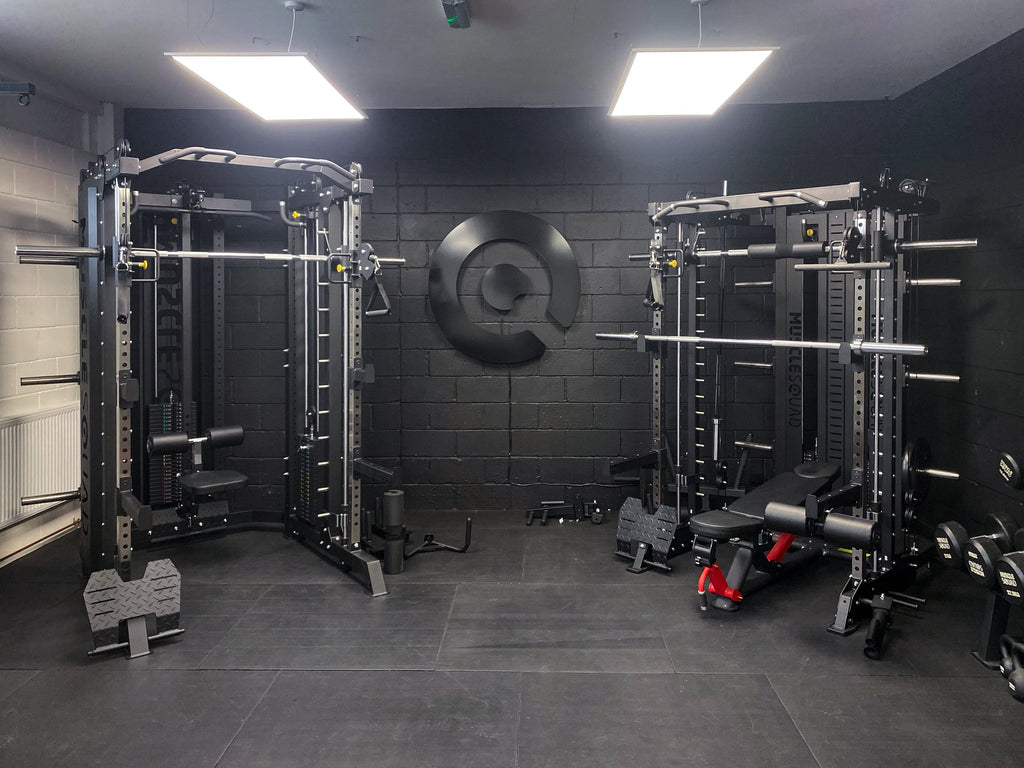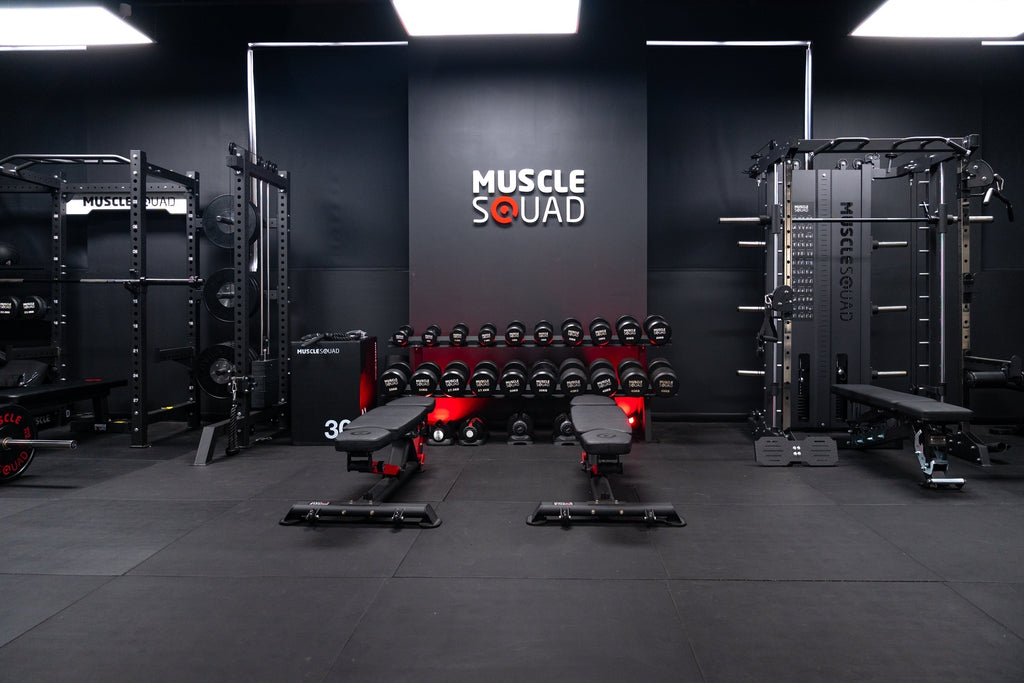Choosing the right squat rack can feel like a daunting decision. It requires time, planning and an understanding of your fitness goals. However, it’s also one of the best investments you can make to elevate your training.
To help simplify the process, we’ve put together this comprehensive guide to ensure you consider all the key aspects when buying a squat rack. From your available space to your training needs, use this checklist to find the perfect rack for your gym setup.
What to look for in a gym rack
There are three main types of equipment you may want to consider.
- Squat racks — ideal for barbell training, squats, presses and pull-ups.
- Smith machines — a versatile option with guided barbell tracks for safer lifting.
- Cable systems — perfect for functional training, allowing for a wide variety of exercises like rows, flys and tricep extensions
Decide which piece (or combination) of equipment aligns best with your training style and goals.
How much space do you have in your gym?
Space is a crucial factor when choosing a rack. It’s not just about fitting the rack into your gym, but also ensuring you have enough room around it for safe and effective training. If you think it’s best to see a rack up close, visit one of our showrooms to get a first-hand feel for your centrepiece.
Consider these factors when measuring your space.
- Height clearance. Ensure there's enough clearance above the rack so the pulley wheels run smoothly and to perform pull-ups.
- Width and depth. Account for enough space to move freely around the rack and perform exercises like deadlifts or dumbbell work.
- Weight storage. Make sure there’s room to load and store weight plates easily.
Space-saving options include.
- Quarter racks. Designed to fit snugly in the corner of your room.
- Folding racks. Ideal for home gyms with limited space; fold them away when not in use.
- Standard racks. Perfect for larger gym setups where space isn’t a constraint.
Quality and specifications
The quality of your squat rack comes down to its durability, stability and overall performance. Generally, higher-quality racks come with a higher cost — greater investment. It’s convenient, time-efficient and a great long-term solution.
Our racks are graded in four phases.
- Phase 1 — For those without a dedicated gym space, such as a garage or outbuilding. Perfect for fitting in dumbbell workouts, treadmill sessions or other exercises with space-saving equipment.
- Phase 2 — Designed for home gym/garage use, offering excellent value and durability for beginners and casual trainers.
- Phase 3 — Perfect for advanced home gym or PT studios, with increased sturdiness, features and endless customisation.
- Phase 4 — Built for commercial use, these racks handle the most rigorous training environments with heavy-duty construction and premium finishes.
If you’re outfitting a professional gym or PT studio, this equipment ensures your setup is reliable and meets industry standards.
Cable ratios — which one is right for you?
If you’re considering a rack with a cable system, understanding cable ratios is essential.
- 1:1 ratio. Best for heavy lifts, allowing you to utilise the full weight stack without assistance. Ideal for exercises like lat pulldowns and seated rows.
- 2:1 ratio. Provides a lighter feel, making it suitable for smaller isolation movements like lateral raises and chest flys.
Think about how you’ll use the cable system and choose the ratio that aligns with your workout style. For more guidance, check out our blog on cable ratios.
What are your training goals?
Your training goals should heavily influence the type of racks you choose. Are you focusing on powerlifting, bodybuilding or general fitness?
Questions to consider.
- Will you be lifting heavy weights or focusing on endurance training?
- Do you plan to train alone or will you have a workout partner?
- Are you setting up a home gym, PT studio or commercial gym?
For solo trainers, safety features like spotter arms or a smith machine may be essential. If you’re training with a partner, a standard squat rack with more open space will suffice.
What’s your budget?
When planning your budget, compare the cost of a squat rack to long-term gym memberships. Investing in a rack can save you money over time by eliminating membership fees, commute costs and time spent travelling to and from the gym.
Prices will vary depending on the quality, features and additional attachments. Start by deciding your budget range, then explore the racks that meet both your financial and training needs.
Attachments and add-ons
Attachments can significantly enhance the functionality of your squat rack. Consider what extras you might want to add, such as.
- Pull-ups bars (included in all our racks)
- Dip stations
- Landmine attachments (for rotational exercises like landmine presses)
- Cable pulley system
- Weight storage pegs
By customising your rack with the right attachments, you can maximise its versatility and tailor it to your training style.
Final checklist
Before making your purchase, use this checklist to ensure you’ve covered all the essentials.
- [ ] Decide if you need a squat rack, smith machine, cable system or a combination of all three.
- [ ] Measure your space to confirm the rack will fit comfortably.
- [ ] Choose the right quality level: Phase 1, 2, 3 or 4.
- [ ] Select the cable ratio (1:1, 2:1 or both) that suits your training.
- [ ] Consider your training goals and who will be using the rack.
- [ ] Finalise your budget to narrow down your options.
- [ ] Decide which attachments you want to include with your rack
Need help choosing the perfect squat rack?
We want to make the decision-making process as simple as possible. If you have any questions, our team is here to assist.
Ready to get started?
- We offer a free gym design service to ensure your rack fits perfectly into your space.
- Visit one of our showrooms across the UK to test the equipment yourself.
Contact us today and let’s take your training to the next level! 💪

 Apr 15, 2025 - Luke Whitburn
Apr 15, 2025 - Luke Whitburn


Leave a comment: